The cost of acquiring new app users has risen by 60% in the past few years.
With such increasing costs, improving your app’s retention rate and preventing users from dropping off is imperative. Yet, app churn is a very common challenge that most businesses struggle to tackle.
Be it UX issues, performance problems, or usability gaps, users do not think twice before abandoning an app if they feel it does not serve their purpose or add value to their journey.
What makes matters worse is most of these problems remain undetected, which means app owners have no clue as to why their users are dropping off and what factors led to this decision.
Funnel analysis is a great way to tackle this challenge as it helps identify these drop-off points and allows you to optimize entire user journeys.
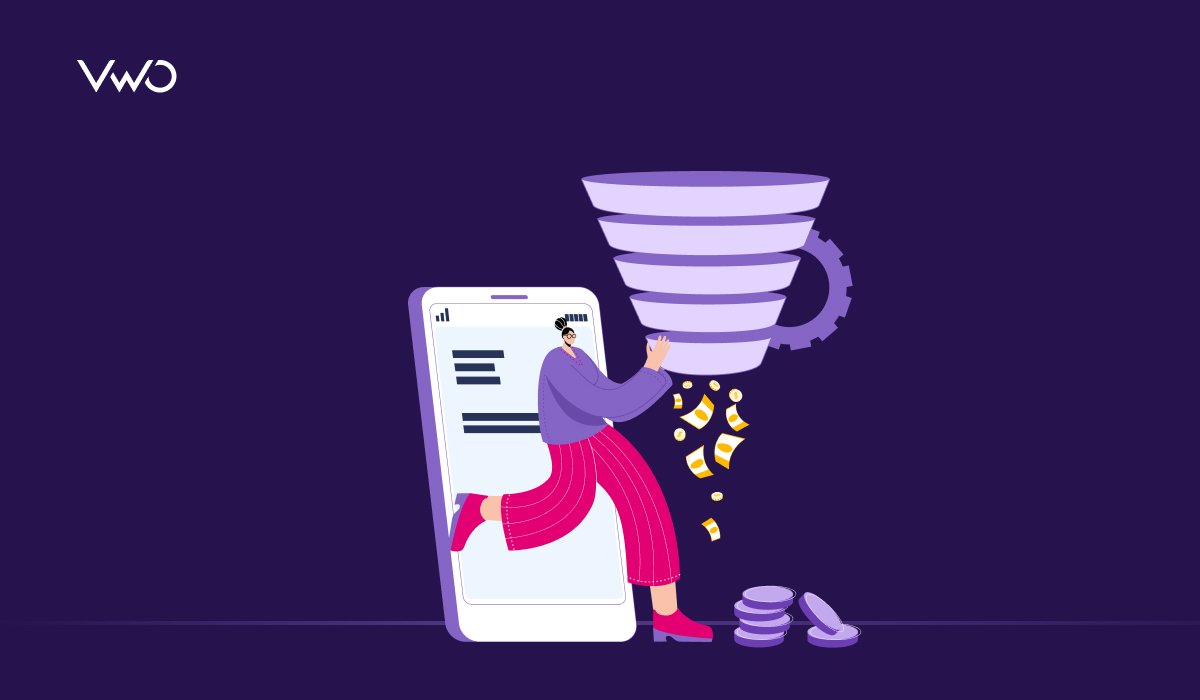
What is funnel analysis?
Funnel analysis for mobile apps is a method of tracking user journeys within a mobile app and analyzing their actions at every stage. The purpose is to gain valuable insights into user behavior, identify challenges, and reduce churn.
While every user is unique, they follow similar paths on your mobile app.
These paths contain steps or actions users take to reach a specific goal like account creation, product purchase, or free trial sign-up.
With funnel analysis, you closely analyze each of these steps to understand how many users made it through the funnel and how many dropped out.
While there are many ways to improve mobile app conversions, funnel analysis gives you a better picture of where exactly your users dropped off, making it easier to understand the reason behind these drop-offs.
For instance, this is what a mobile app funnel looks like for a customer of an eCommerce brand.
- Go to the product category page
- Choose a product
- Add to cart
- Go to the checkout page
- Make the payment
Now, let’s say 10 users began their journey at the first step, but only 3 completed the purchase. Normally, you would only notice the high drop-off rate, without understanding where exactly the purchase was abandoned.
However, with funnel analysis, you can break down the user journey into different stages, track their interactions at each stage, and pinpoint the exact stage at which they dropped off.
What are some key benefits of funnel analysis for mobile apps?

Visualize important user journeys
The core benefit of funnel analysis is that it helps you visualize how users engage with your mobile app.
Rather than assuming what went wrong, you can analyze user interactions at a particular stage of the funnel, identify friction points that cause drop-offs, and optimize them to improve the mobile app experience.
As you continue to analyze different funnels within the app, you will gain deeper insights into your users and understand how they behave at different stages of their journeys.
Pinpoint high churn areas
The churn rate for mobile apps is 74.7% on Day 1, which goes up to 94.3% by Day 30.
This is quite worrisome, especially because apps spend a lot on acquiring each user and a high churn rate would have a direct impact on their revenue.
Funnel analysis is an effective way to identify where exactly churn takes place.
It helps you discover friction points that cause frustration or abandonment among users, allowing you to optimize them and improve user retention.
Optimize key conversion touchpoints
By analyzing user journeys through funnels, you can identify the critical conversion touchpoints for each stage and make data-driven changes to optimize them.
This way, you get to address key user concerns and make informed decisions to reduce drop-offs and app abandonment.
When you continuously optimize these key conversion points, your users will seamlessly move from one stage to another and achieve their specific goals.
Taking a closer look at mobile app funnel analysis
Improving the mobile app experience requires continuous research and optimization. While funnel analysis takes care of both these tasks, you can implement it in two different ways.

The quantitative side of funnel analysis
It’s all about the numbers. This involves tracking and analyzing numerical data about user interactions, behavior, preferences, and patterns.
How many users arrived at the checkout screen?
What percentage of users completed the onboarding process?
How much time did users spend on the free trial sign-up screen?
These are the questions that you can answer by adopting a quantitative approach to funnel analysis.
Tools like Google Analytics and methods like survey ratings, and experiments can help you analyze the performance of your mobile app funnels.
The importance of quantitative research in mobile app funnel analysis
Quantitative research plays a crucial role in understanding user behavior.
Based on the insights gathered from this research, you can make changes or improvements to enhance the mobile app experience and drive conversions.
1. Measure funnel performance
The most important benefit of quantitative research is it helps you track and measure the performance of a funnel.
You can easily measure the performance of a particular funnel stage by tracking key metrics like conversion rate, drop-off rate, session duration, bounce rate, time spent on a screen, etc.
Moreover, these quantitative metrics can help you analyze the impact of any changes you make, giving you a chance to modify or optimize your strategies accordingly.
2. Take data-backed decisions
A huge challenge for mobile app optimization is the preference of opinion over data. Rather than analyzing user behavior, app owners often assume what their users want and make changes or improvements based on these assumptions.
Quantitative research can help avoid this challenge to a certain extent as it offers an unbiased perspective of how an app is performing.
For example, suppose your analytics tool shows a high drop-off rate during a certain stage of the account creation funnel. In that case, you can use it as evidence to propose relevant changes that can reduce friction and simplify the user journey.
3. Prioritize optimization efforts
Let’s say the product purchase funnel in your eCommerce app shows a significant number of drop-offs during the payment stage.
On the other hand, analysis of the post-purchase funnel shows a drop in the number of users who leave a product review.
While both of these challenges impact the user experience, you must prioritize fixing the payment issues first as it has a direct impact on your revenue.
Mobile app funnel analysis offers a clear picture of these experience roadblocks, based on which you can allocate your resources and tackle these problems more strategically.
Is quantitative research enough for app funnel analysis?
While this approach offers crucial data like how many users completed the funnel and where exactly some users dropped off, it still does not reveal an important piece of the puzzle.
Why did the users drop off?
When you are looking to improve app conversions, it is important to understand the reasons behind the actions that users take at different stages of the funnel.
This is where qualitative analysis for mobile apps comes into the picture.
Understanding the ‘why’ behind user actions with qualitative analysis
Qualitative analysis is all about going beyond traditional research and analytics to dig deeper into user behavior.
The goal is to observe how users interact with your app and gather nuanced insights about their thoughts, feelings, intent, desires, etc.
Popular qualitative analysis methods include conducting surveys, and user interviews or observing heatmaps and session recordings of your app.
For example, you can use VWO Insights for Mobile Apps to watch the session recordings of key funnel stages and observe how users interact with the app, the actions they take, and the potential reason for their drop-off.

Based on these crucial insights and observations, you can make targeted changes and improvements tailored to the needs and behavior of your app users.
Let’s say that your app analytics tool shows a significant drop in the conversion rate of your ‘free trial to paid plan’ funnel. Further analysis reveals that users are dropping off at the ‘Compare Pricing Plans’ stage.
However, you still do not understand why these drop-offs are happening.
This is where you leverage qualitative research and watch the session recordings of users who abandoned the funnel at this stage. Here, you observe that users had to wait for almost 8-10 seconds for the comparison plans to load completely.
This led to frustration among users, causing them to abandon the process.
So, even though a traditional analytics tool might tell you where your funnel needs optimization, qualitative research methods will give you deeper insights into user interactions, their motivations, and what they experienced at a specific stage.
This is why you need a strong balance of quantitative as well as qualitative research to analyze mobile funnels and optimize the app’s UX.
How to use funnel analysis to increase mobile app conversions?
Now that we’ve covered the benefits and various methods of funnel analysis, let’s take a closer look at how you can use funnels to improve the user experience and get more users to take the desired actions on your mobile app.

Step 1: Identify and define key mobile app metrics
Before you begin setting up your process, it is important to define the key metrics and goals for each mobile app funnel.
If you’re doing this for the first time, you can start by identifying the endpoint of your funnel and go backward to track the steps a user takes to reach this point.
This strategy allows you to explore the possible actions a user takes to complete the goal and also helps you identify the key metrics for each of these actions.
For example, let’s say you wish to set up a funnel for the onboarding process of your online fitness app. Here, the final stage involves users booking their fitness session from the app.
Using our ‘start at the end’ strategy, we can track the user journey from this point.
Before booking a session, users were asked about their preferred workout types, existing health conditions, and current fitness levels so that the app could display a customized set of sessions.
Prior to this, users were given a short tutorial on how the app works, explaining the booking process and other important details. Before this, they were greeted with a welcome screen and were also asked to sign up with their email address.
So, this is the ideal path that users would take to book their first fitness session.
By going backward, we’ve identified the key stages of the funnel, and based on this information, you can now define the metrics that indicate the successful completion of each stage.
Here are a few crucial mobile app metrics that determine the performance and engagement of your mobile app funnel.
- Conversion rate
- Retention rate
- Churn rate
- Average session duration
- Time to first conversion
- Average order value
- DAU (daily active users), MAU (monthly active users)
Step 2: Analyze the performance of each funnel stage
The next step is to set up appropriate measures to track and analyze user behavior throughout the funnel.
Tools like Google Analytics or Mixpanel can help you with this aspect of funnel analysis as they offer valuable insights into how many users move from one step to the next and identify where these drop-offs occur.
Also, they help you track key metrics for each funnel stage like drop-off rates, conversion rates, time spent at each stage, and so on.
For instance, these tools can help you measure the percentage of users who complete onboarding versus those who do not or the time it takes for users to make their first in-app purchase.
However, as we’ve seen in previous examples, the insights provided by these tools are only limited to the numerical side of analytics, which is not enough to understand user behavior and optimize the mobile app experience.
To do so, you need a complete tool that offers the above features and empowers you to go beyond these numbers and examine the qualitative aspect of user behavior.
VWO Insights for Mobile Apps is one such tool that helps you visualize user interactions with session recordings. This is a crucial feature that you can use to see what your users experienced just before they dropped out from a funnel.
Another way to analyze funnel performance is to segment your users based on key demographics like location, age group, or even behavioral data like past interactions and preferences.
For example, younger users might have different engagement patterns compared to older users. Geographic segmentation might uncover regional preferences or hidden user challenges, such as language barriers or local content relevancy.
By segmenting your users, you can optimize the app experience to meet the specific needs and expectations of different user groups, leading to better engagement and higher conversion rates.
By combining all of these crucial aspects, you can track user behavior at each funnel stage, compare their performance based on different user segments, and gain actionable insights into every action that users take.
Step 3: Turn insights into action
Once you’ve collected important insights from your app funnel analysis, you must leverage them to guide crucial app improvements and optimization efforts.
For example, analysis of the ‘app sign-up’ funnel revealed that a large number of users frequently dropped off during the profile registration stage.
Also, the heatmap data suggests low user engagement on the last few fields of the registration form.
Based on these observations, you can deduce that users want a shorter registration process. To do so, you can either reduce the number of required fields or enable one-click social media sign-ups.
You can also use a tool like VWO Testing for Mobile Apps to run A/B tests at this stage of the funnel analysis and confirm your hypothesis.
This is how you can leverage insights from funnel analysis to address key friction points and ensure a smoother journey for your mobile app users.
Step 4: Continue optimizing the funnel analysis process
Funnel analysis is an ongoing process. As your app grows, your funnels should also evolve to accommodate changing behaviors and engagement patterns.
The best way to do so is to regularly review your funnel performances and gather feedback at key user touchpoints.
Based on these observations, you can optimize your funnel to ensure that users have better journeys and they can also achieve their goals effectively.
This structured approach allows you to make data-driven decisions that enhance the overall effectiveness of your mobile app, allowing you to drive more conversions, reduce app churn, and build a positive user experience.
Use funnel filters in VWO Insights for Mobile Apps to better understand important user journeys. With the help of these filters, you can analyze specific session recordings. You can even mix and match these sequences of events with different user types (e.g., logged-in users) to identify the exact points where things go wrong for a user segment.
Use cases of mobile app funnel analysis
Here are some practical examples of how you can use funnel analysis to optimize the user experience and improve conversions on your mobile app.
Solving cart abandonment issues on your eCommerce app
Let’s say you manage a shopping app and you’ve noticed an increase in cart abandonment rates during the past few weeks.
Your analytics tool shows that while 70% of users added items to their carts, only 15% went on to complete the purchase.
This is a massive drop and indicates a problem with the mobile app experience, especially regarding users who wish to buy a product. To understand more about this problem, you decide to build a funnel for customer purchases.
You begin by tracking the user journey from the ‘Add to cart’ stage and identify different funnel stages like reviewing the cart, entering shipping details, and making the final payment.

Once you break down the user journey, you start tracking the key metrics for each funnel stage. This analysis reveals that the shipping details screen registered the highest number of user drop-offs.
Taking this a step further, you observe session recordings of the users who dropped off from this stage. Here, you notice that users are manually adding their address details, even though they have previously bought products from the app.
Moreover, you also start triggering surveys for users who are about to abandon the purchase from the checkout page. The survey responses indicate that users are unsure of the number of steps involved in the checkout process, which is leading to confusion and frustration.
Based on this detailed funnel analysis, you were able to pinpoint several ‘hidden’ issues within the checkout process.
You can now take appropriate measures like enabling address auto-fill or adding a progress bar to improve the funnel performance and reduce cart abandonment on your eCommerce app.
Addressing loan application drop-offs in a banking app
Suppose you manage a financial app. You’ve noticed a large number of users are starting the loan application process, but a majority of them fail to complete it.
To understand this issue better, you create a funnel for the loan application process and break down the journey into different stages: starting the application, filling out personal details, verifying income, and final submission.
Initial analysis of this funnel shows that the drop-off rate is quite high at the income verification stage. The heatmap data for this screen reveals high activity around the ‘Upload Documents’ button.

While watching the session recordings, you also notice that users are struggling to upload documents due to the poor usability of the upload feature. Additionally, you filter user segments by device type and discover that the problem is more pronounced among users on older devices, indicating performance issues.
Armed with these insights, you decide to optimize the document upload process by adding relevant instructions and improving the usability of the upload feature.
Thus, funnel analysis helps you to pinpoint friction areas and understand why they are causing problems for the users.
Improving feature adoption in a productivity app
Imagine you are managing a productivity app, and you recently introduced a new task management feature that makes it easier for users to track and share their tasks.
However, data suggests that only a small percentage of users have engaged with this feature, which is a key issue since it is one of your app’s core value propositions.
In this case, you set up a funnel to track user interaction with the new feature: open the app, tap on the hamburger menu, tap ‘Manage Tasks’, create a new task, and save it.
Upon analyzing this funnel, you notice that very few users move from the hamburger menu to ‘Manage Tasks’.

Using in-app analytics features like heatmaps and session recordings, you realize that users are either unaware of the new feature or unsure how to use it effectively.
To address this problem, you can introduce an in-app tutorial that highlights the new feature upon app launch, coupled with tooltips and prompts that guide users on how to utilize it.
Additionally, you can filter user segments based on their usage patterns and send in-app messages, encouraging users to try the new feature.
By converting this process into a funnel, you can make targeted efforts to improve feature discovery, boost adoption, and also promote repeated use of the feature.
Best tools for mobile app funnel analysis
You can choose from a wide range of funnel analysis tools based on your unique goals and business requirements. Here is a list of the top funnel analysis tools for mobile apps.
1. VWO Insights for Mobile Apps
One of the fast-growing tools for funnel analysis is VWO Insights for Mobile Apps. The tool empowers app owners to go beyond traditional analytics numbers and understand the why behind every user action using session recordings.
With VWO Insights for Mobile Apps, you can use a wide range of funnel filters to understand and decode user journeys at a deeper level.
You can use it to analyze the funnel performance and identify why users dropped off at a certain stage.
2. Google Analytics
Being a free tool, Google Analytics is the most common preference for app owners. It offers detailed insights into user behavior, including funnel analysis.
You can track user interactions from app installation to specific events like in-app purchases or sign-ups, while the tool also offers key insights into the overall performance of your app.
3. AppsFlyer
AppsFlyer is a popular analytics tool that helps you track and measure the engagement and performance of your mobile app.
The tool helps you gather key insights into user behavior and lets you build optimized experiences for your users.
4. Amplitude
Amplitude is another tool that offers detailed funnel analysis along with other behavioral analytics features.
It helps you track user journeys, and gather key insights into the conversion rates and friction points of each funnel stage.
5. Mixpanel
Mixpanel is a good tool for analyzing funnels and tracking how users progress through different stages of your app.
You can use Mixpanel’s features to gather insights into user behavior, identify drop-off points, and optimize the user experience.
6. Moengage
Another tool that helps with mobile app funnel analysis is Moengage. It helps you analyze user behavior and offers insights into how users interact with your app.
The tool enables you to analyze funnels by visualizing user journeys and tracking the performance of each funnel stage.
Final thoughts
Improving the mobile app experience is a challenge that involves a lot of factors, one of which is building a seamless user journey.
Funnel analysis is the best way to optimize user journeys, reduce drop-offs, and convert more users.
VWO Insights for Mobile Apps is one such tool that lets you manage all the above tasks in one place.
With powerful features like heatmaps and session recordings, you can closely analyze user behavior and gather deeper insights into the actions they take on your app.
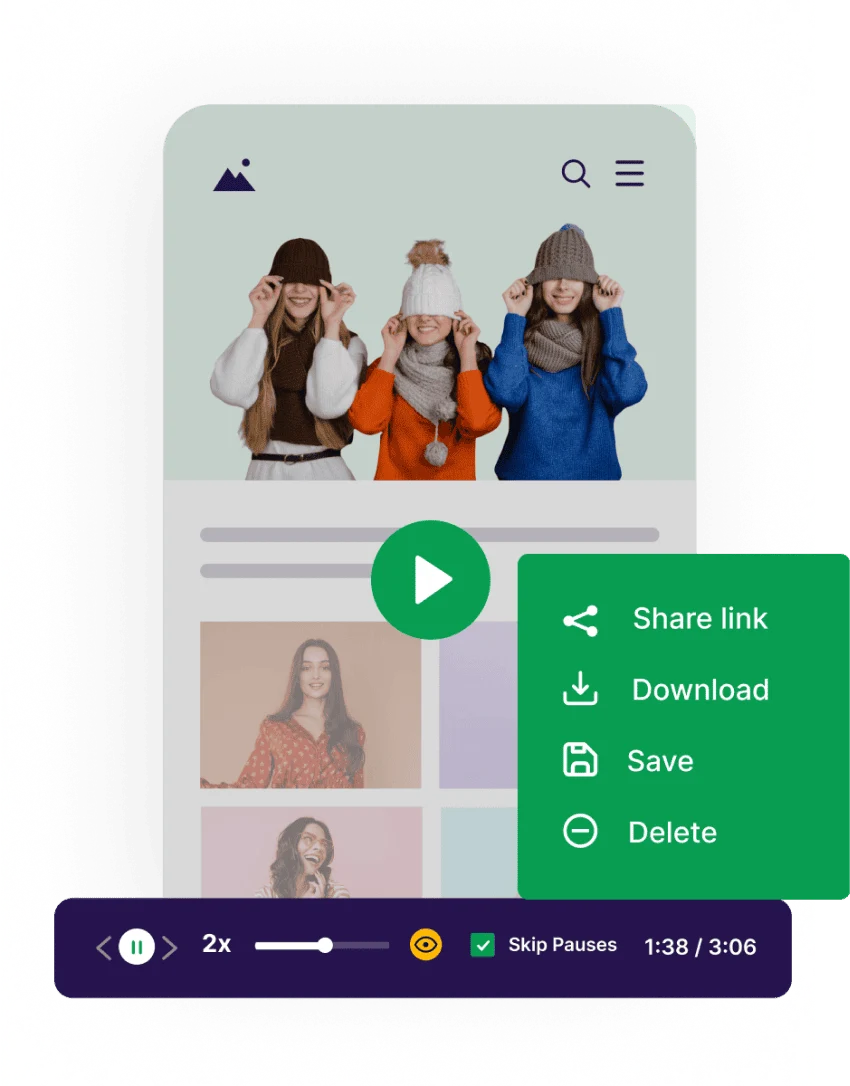
Also, you can track funnel performance by using the multiple filter options to watch session recordings of users who are struggling with your app.
Take a free product tour of VWO Insights for Mobile Apps today to explore these features first-hand and build an optimized experience for your mobile app users.



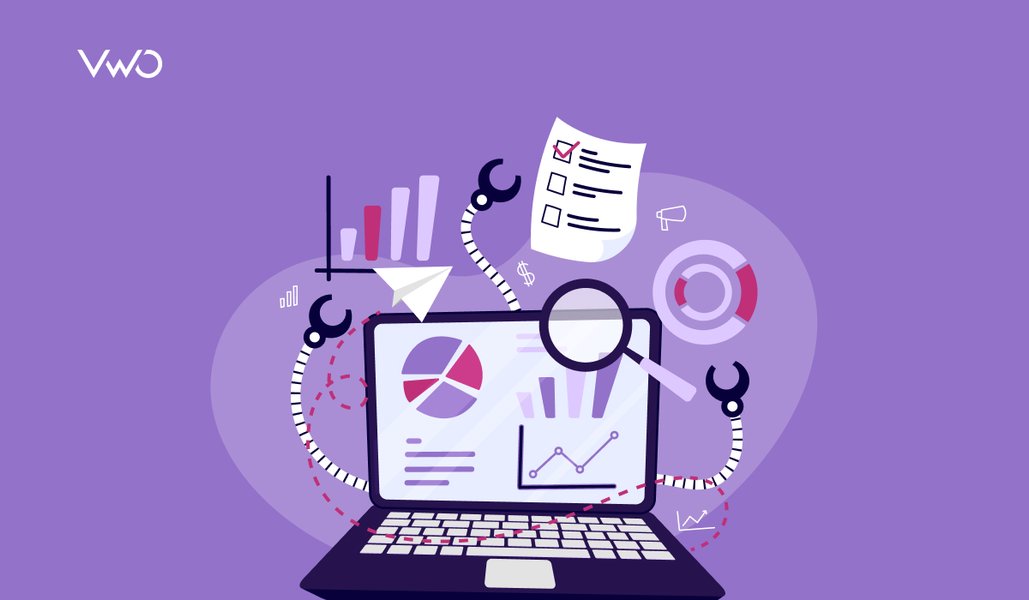
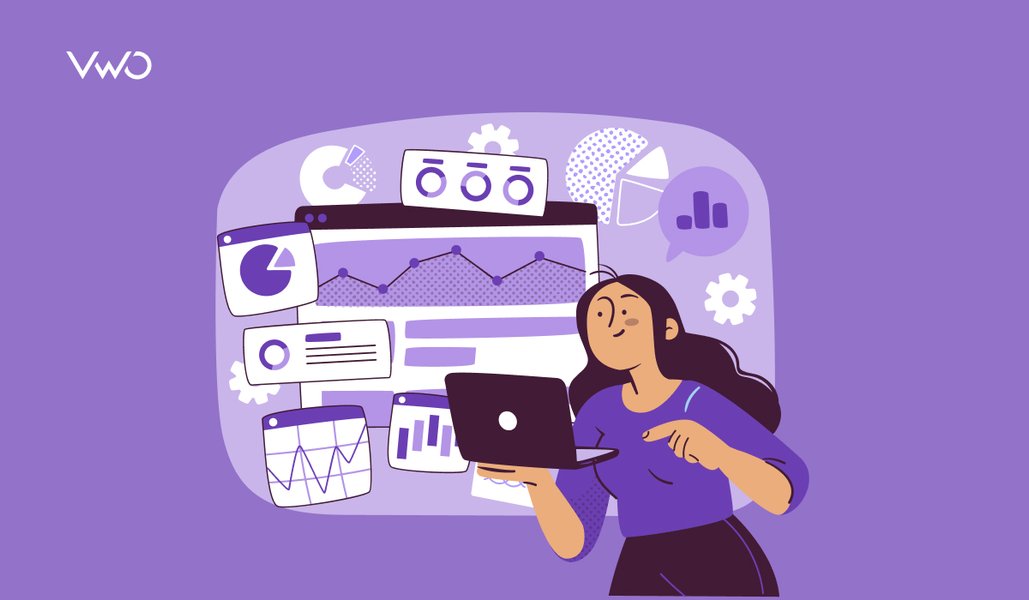
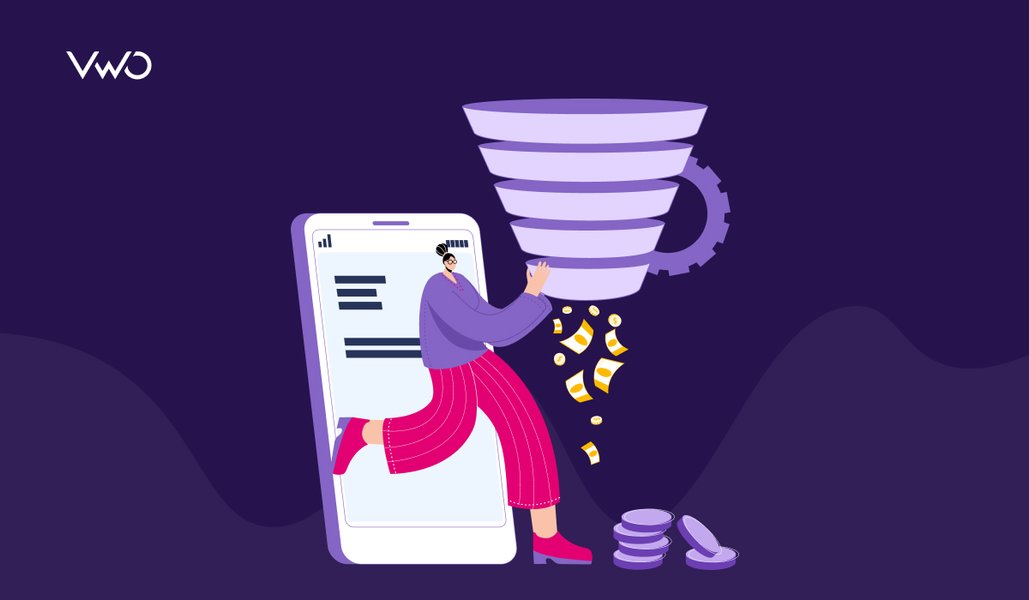
![7 Top Performance Reporting Software in 2026 [Expertly Curated] + How to Choose the Best](https://static.wingify.com/gcp/uploads/sites/3/2025/04/Feature-image-7-Top-Performance-Reporting-Software-How-to-Choose-the-Best-One.jpg?tr=h-600)
![5 Best Free App Analytics Tools in 2026 to Boost App Performance [Research-Backed Picks]](https://static.wingify.com/gcp/uploads/sites/3/2025/04/Feature-image-5-Top-App-Analytics-Tools_-Solutions-to-Improve-Your-App-Performance.jpg?tr=h-600)











